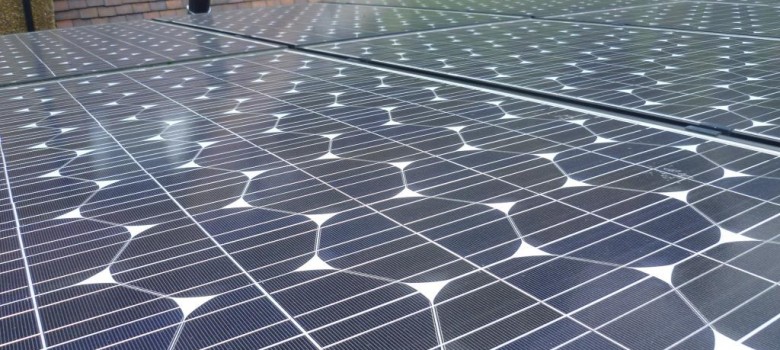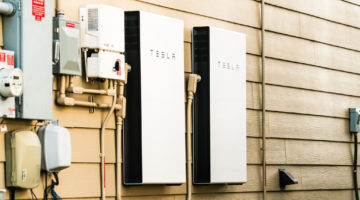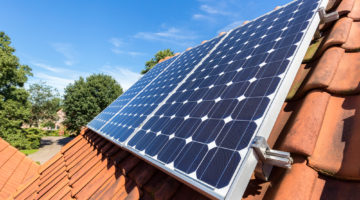
UPDATE: The Feed-In Tariff is now closed for new applications. To find out about the new scheme designed to replace it, click here.
With the proposed reduction to the solar feed-in tariff, we are getting a huge amount of interest from people looking to install their new solar panels before the 1st January (the date that the proposed cuts would take place).
We are also getting a fair bit of interest from households that already have solar arrays who want to add additional solar panels to their existing systems. This is 100% feasible but there are a few things to bear in mind.
The Feed-in Tariff
Firstly the feed-in tariff you will be paid for the new panels will be today’s rate – not the rate you got when your first installed panels on your roof. That means that if you installed your panels at the end of 2011 and benefited from the 43p feed in tariff, the return from your new additional panels is not going to be anywhere near as big – the feed in tariff today is 12.47p / kWh, so the return on your new panels will be less than a third of what it was. Having said that the panels will be much cheaper to install!
G83 & G59 Solar applications
The second thing to bear in mind is the size of the system.
Systems under 3.68kW are deemed small scale and can be installed and connected to the grid straight away. The system then needs to be registered by submitting a G83 form to the Distribution Network Operator (DNO) after the install (your solar installer will normally do this).
The reason for the 3.68kW is because there is a 16 Amps per phase limit so 16A multiplied by 230v (mains voltage) = 3.68kW.
If you decide to install a system larger than 3.68kW, then you need to make a G59 application to the DNO – this is a legal requirement – they will decide whether this size system will operate within the existing grid framework – i.e. an acceptable load will be exported on the grid. In most cases this application will be approved provided the proposed system is not deemed excessive. The process will however take approximately 8 weeks from start to finish, so it may delay the install.
The good news is that inverters are limited to 16 Amps, so in reality a 4kW system can be installed without the need to go through the G59 process, however if you are planning to install additional panels which will take your total installed capacity above the 4kW threshold (so 16 x 250w panels), you will need to go through the G59 process.
 The size of the existing panels determine the size of the new panels
The size of the existing panels determine the size of the new panels
Another thing to bear in mind is the size of the new solar panels that are being proposed. Remember in a solar array, each panel (if they system has one central inverter) will be operating at the efficiency of the worst performing panel. Likewise if you existing panels are 200w and you are going to add panels and still run them through the same inverter, then you should buy 200w panels (ideally the same make and model). If you bought 300w panels, then these would be limited to 200w anyway so it will be cheaper to go this route.
You may require a new inverter
When a system is installed the inverter will be sized accordingly, it is normally sized to about 80-120% of the total load. Therefore it might not be possible to add additional panels into your existing array and keep your inverter. To be honest, depending when the inverter was installed it may be better to get a new one that will be able to cope with the additional load going through it. i.e. if the size of your system goes from 3kW to 5.5kW, then you might want to install a new 6kW inverter especially if it comes with a 10 year warranty. The other option is simply to install a completely separate inverter for your new solar panels – although this may be more expensive in the long run when it comes to the time you need to replace them.
Make sure it is worth it!
The most important thing is to run the numbers – adding one panel will not really be worth it – we recommend adding a minimum of 1kW to ensure you get the financial return from the additional panels (in terms of energy savings and Feed-in tariff payments). This means you are going to need a fairly decent amount of space on the roof. It is also worth checking the structural integrity of your existing roof before adding any additional solar panels to your roof. While the roof might be absolutely fine with the existing array, additional solar panels might be too heavy for the roof to withstand, so make sure this is considered before making the investment.
UPDATE: The Feed-In Tariff is now closed for new applications. To find out about the new scheme designed to replace it, click here.












I have a secondary and continuous flat roof over my front-door porch and my front bay-window which extends the full width of my house approximately 18 ft. Is it allowable to have a second array of solar panels installed at the appropriate angle to increase my solar footprint. This, I estimate would be about a third of the present 4KWh.
I have a 3.5 kw system on my SW facing roof and receive the maximum tariff. We are planning an extension which means adding a gable to the middle of the roof and several panels will need to be re positioned. Will this affect our current tariff? How will the inverter be affected? Who do I ask for help on this matter as my installer no longer operates. Many thanks.
Hi Barbara,
The tariff should remain the same, as should the inverter to be honest. You will need to find a local MCS certified installer to come and help you with this.
I currently have a 4kw system and an getting the 12p FIT.
As I understand, the panels can only produce close to 4kw at full sunshine, but because I live in a part of the country that is cloudy most of the time, I don’t get many full capacity days.
So I am wondering if I could add more panels to my system, so it produces closer to but not over 4kw on cloudy days, and if a full sunny day occurs, that the system has a 4KW fit limiter built in? Do wattage limiters even exist?
What i’m saying is that my FIT is 12p and limited to 4kw, so will this still apply if i produce upto 4kw on a cloudy over cast day by adding more panels?
Probably a better thing to do isotope put optimisers on each panel and have a more efficient inverter. So look for a solar edge. That would maximise your current system.
Hi Martin. Any panels you add to it your system will only get the much lower current FiT rate of around 3p, so it’s unlikely to pay for itself for a long time – it also wouldn’t really make a difference to the amount of electricity generated on cloudy days. Also, the feed in tariff rate is based on your system’s capacity, rather than the generation level, so don’t worry about limiting your output to 4kW! Hope I’ve understood your questions correctly!
I have 12 solar panels installed in 2011 with the original higher FIT.. My FIT agreement gives a permitted 4kw system. My panels produce about 2000KWh per annum which is quite a bit lower than the predicted 3400Kwh for a new 4kw system. Can I replace the existing panels with higher output panels and maintain my FIT or can I add to my system to raise output to the maximum and therefore give me approximately an additional 1400Kwh p.a. with an additional income of about £800p.a…